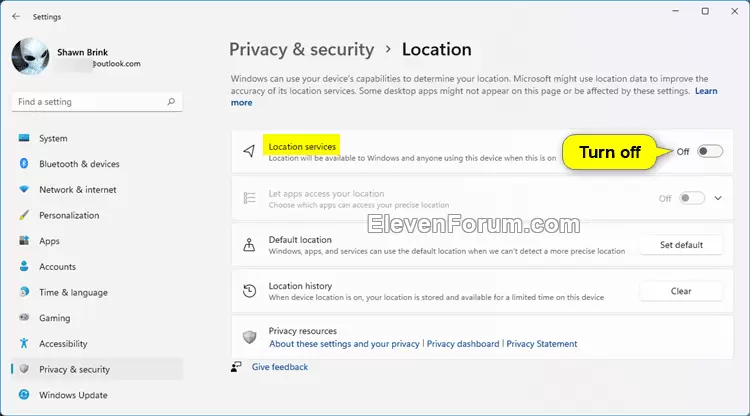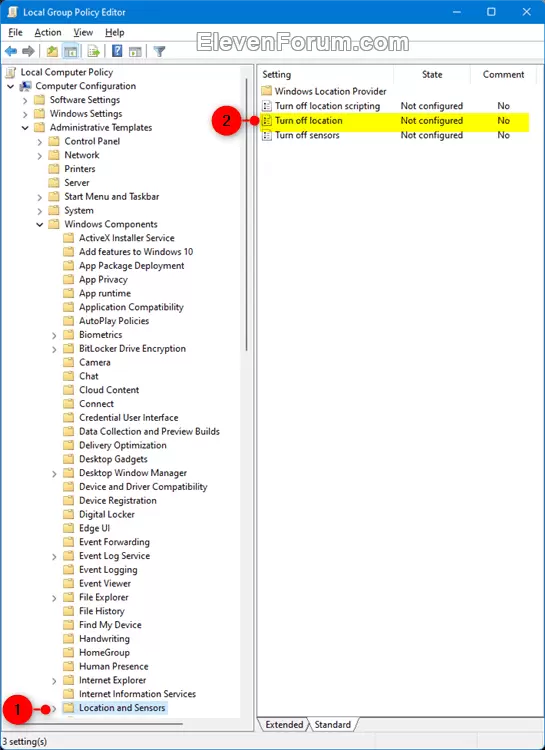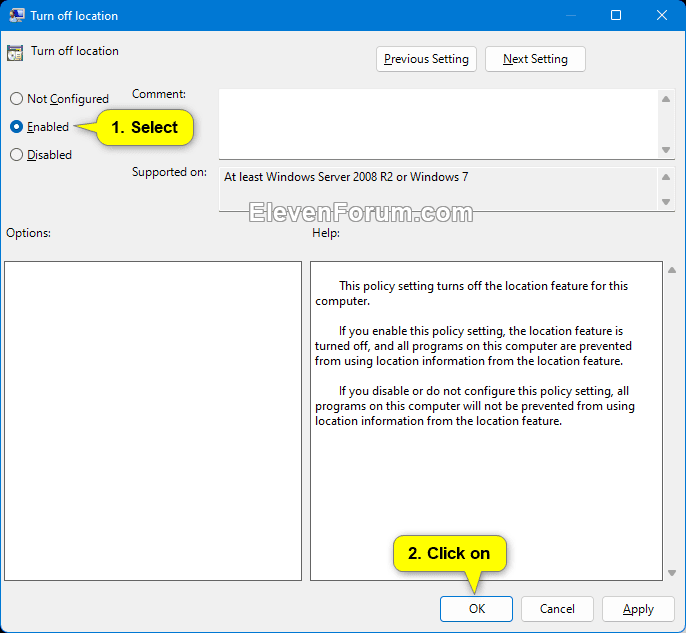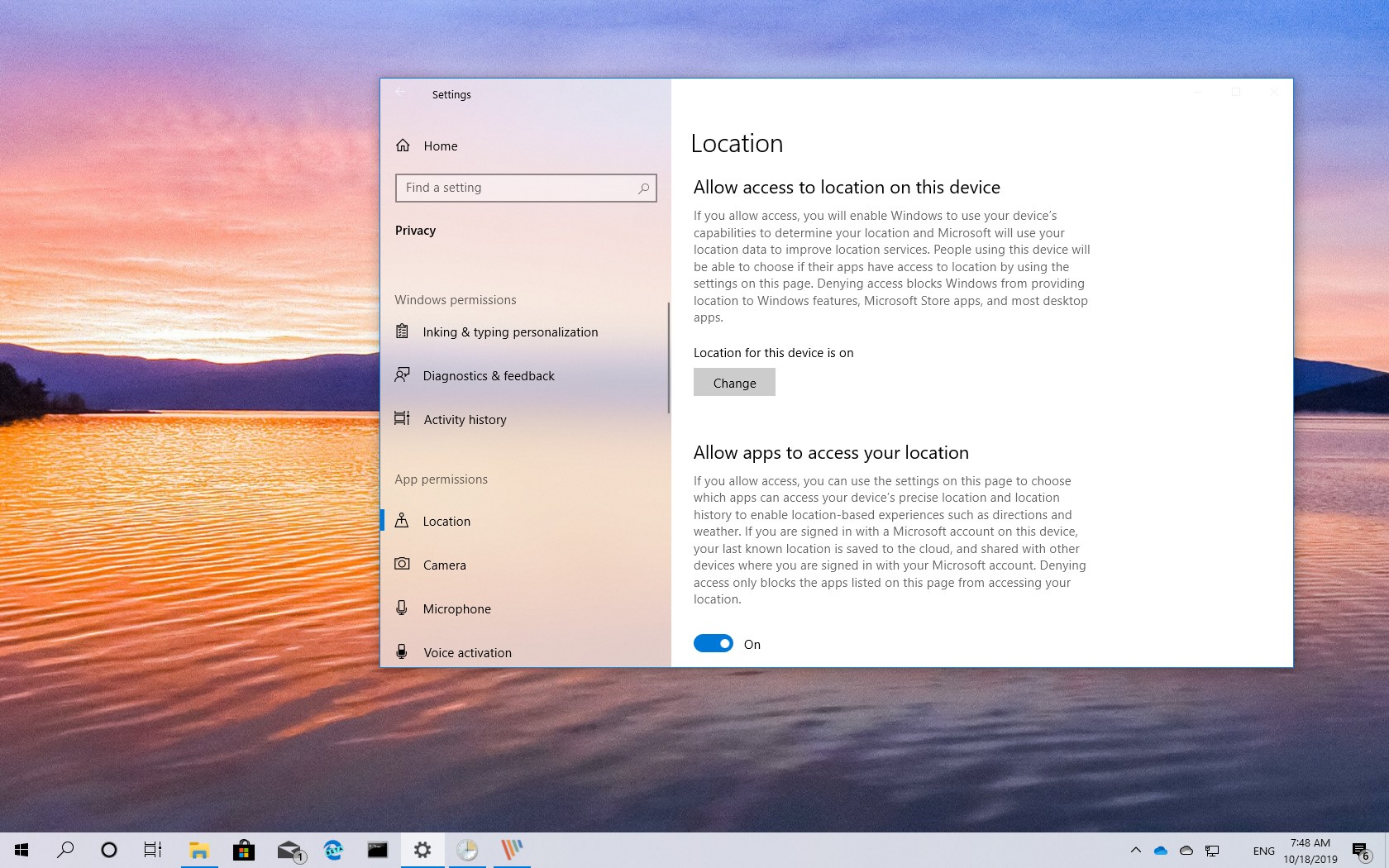How to Turn on or Turn off Location Services in Windows 10?
In order to determine the exact geographical location of your Windows device, Microsoft has launched a location service that helps to determine the exact location of your device and allows applications to provide directions, shops and restaurants that are located in They are close to you and provide you with other items.
Many apps and services request location information from your device, and the Windows Location Service lets you control which apps are allowed to access your exact location.
How do Windows location settings work?
Location Services is a device-wide setting that can be controlled by the device owner. When this feature is enabled, it enables some Windows features – such as automatic time zone adjustment or “Find My Device” – to function properly. When location settings are enabled, Microsoft Location Services uses a combination of Global Positioning Services (GPS), nearby wireless access points, cell phone towers, and your IP address (or default location) to determine your device’s location. they do. Depending on the capabilities of your device, device locations can be determined with varying degrees of accuracy, and in some cases may be pinpointed.
If you have location services turned on, your device will retain location information (including wireless access point information, cell tower information, and location) after removing data that identifies a person or device before leaving the device. Sends accurate GPS (if available) to Microsoft. This de-identified version of location information is used to improve Microsoft’s location services and in some cases is shared with our location service provider partners, currently HERE and Skyhook, to improve the provider’s location services. to forgive
Additionally, with this setting turned on, all users on their device can allow apps to use their device’s location and location history to provide location-aware services, exactly as their device supports them. If you allow a specific app to access your device’s location in the settings page, the app will have access to detailed location information. Otherwise, the location information provided to the program will be less accurate. When your location is determined by a location-aware application or service or Windows feature, location information and recent location history are stored on your device.
If an app or feature accesses your device’s location and you’re signed in with your Microsoft account, your last known location information is also stored in the cloud across all your devices for other apps or services that use your Microsoft account. are used and you have given permission to it is available, stored.
If you’re signed in with your Microsoft account and your device can’t reliably determine your current location on its own (such as when you’re in a building or basement), apps or services can start from your last known location. You and use your location history stored in the cloud if available. Even if no Microsoft account is in use, information about the recent location history of a Windows device is stored on the device, and some Windows programs and features can access this location history.
There are exceptions to how your device’s location is determined that are not directly handled by location settings.
Desktop apps are a special type of apps that don’t ask for separate permission to find your device’s location information and don’t appear in the list that lets you choose apps that can use your location. What are desktop programs? These programs are usually downloaded from the Internet or installed using some type of media (such as a CD, DVD, or USB storage device). They run using an .EXE or .DLL file and typically run on your device, unlike web-based apps (which run in the cloud).
Even when you turn off location services in Windows, some third-party apps and services can use other technologies (such as Bluetooth, Wi-Fi, cellular modems, etc.) to locate your device with varying degrees of accuracy. Microsoft requires software developers who develop apps for the Microsoft Store or develop apps using Microsoft tools to respect Windows location settings, unless you provide the necessary legal consent for a third-party developer to determine your location. have done
However, to further reduce the risk of an app or service being able to determine your location when Windows device location settings are turned off, you should install apps and services only from trusted sources. To more comprehensively protect your location, you can disable the radio-based components of your device, such as Wi-Fi, Bluetooth, cellular modem, and GPS components, that may be used by an application to determine your exact location. However, doing so also hurts other experiences such as calling (including emergency calling), messaging, connecting to the Internet, and connecting to peripherals such as headphones. Please read the privacy policies of the apps and services you have installed to learn more about how they use your device’s location.
To make it easier to get help in an emergency, whenever you make an emergency call, Windows tries to determine and share your exact location regardless of your location settings. Additionally, if your device has a SIM card or uses cellular service, your mobile operator will have access to your device’s location.
This tutorial will show you how to enable or disable location services for all users on your Windows 11 device.
To turn on/off or enable/disable device location services, you must be logged in as Administrator.
Location services require the geolocation service to be active and running.
If you turn off or disable location services, the time zone setting is automatically grayed out and disabled.
If one or more apps are currently using your device’s location through the Windows Location Service, you’ll see a location notification icon in the corner of the taskbar to let you know.
For example, in the image below, you can see the location icon in the corner of the taskbar when an app uses your location. You can click on the location notification mod to see which apps are currently using your location.
![]()
![]()
How to enable and disable location in Windows
Option one: Turn location service on or off in settings
1- Open the settings (Win+I).
2- Click on Privacy & security on the left side. Then click on Location on the right side.

3- Now you can turn the location service on or off as you wish.


4- Finally, you can close the settings window.
Option two: Turn location services on or off using a REG file
1- Step 2 (on) or step 3 (off) below according to what you want to do.
2- By default, Windows location services are turned on.
a) To download the following file, click on the download button below and go to step 4.
Turn_on_location_services.reg
3- Turn off the location service
a) To download the following file, click on the download button below and go to step 4.
Turn_off_location_services.reg
(REG file content for reference):
Windows Registry Editor Version 5.00
[HKEY_LOCAL_MACHINE\SOFTWARE\Microsoft\Windows\CurrentVersion\CapabilityAccessManager\ConsentStore\location]
“Value”=”Deny”
4- reg file. Save to your desktop.
5- On the reg file. Double click downloaded to merge.
6. When prompted, click or tap Run, Yes (UAC), Yes, and OK to confirm the integration.
7- Now, if you wish, you can save the reg file. Delete the downloaded.
Option three: Enable or disable location service in Local Group Policy Editor
Local Group Policy Editor is only available in Enterprise, Windows 11 Pro, and Education editions.
In all versions, the fourth method can be used for configuration.
1- Go to Local Group Policy Editor (gpedit.msc).
2- Go to the following path on the left page of Local Group Policy Editor:
Computer Configuration\Administrative Templates\Windows Components\Location and Sensors

3- In the right part of Location and Sensors in the Local Group Policy Editor, double-click on the option Turn off location policy so that you can edit it.
4- Now you can follow the following methods to activate or deactivate the location service.
5- Activate the location service.
This is the default setting to allow option one and option two.
a) Check Not Configured. Click OK and proceed to step 7 below (see image below).

6- Disable the location service
With this method the location is disabled.
a) Tick Enabled and click OK. Then go to step 7.

Option four: Enable or disable location service using REG file
1- Do step 2 (enable) or step 3 (deactivate) as you wish.
2- Activate the location service. This is the default setting to enable option one and option two.
a) To download the following file, click on the download button below and go to step 4 below.
Enable_location_services.reg











